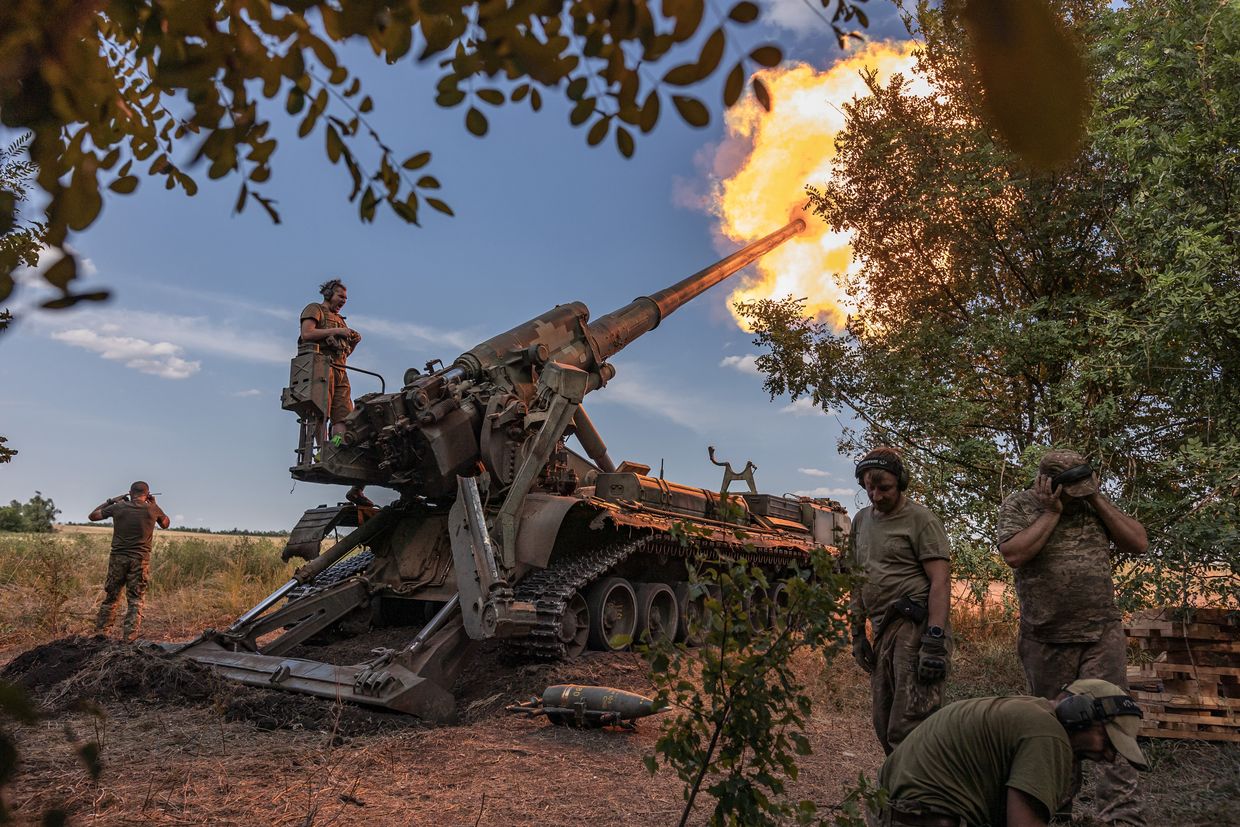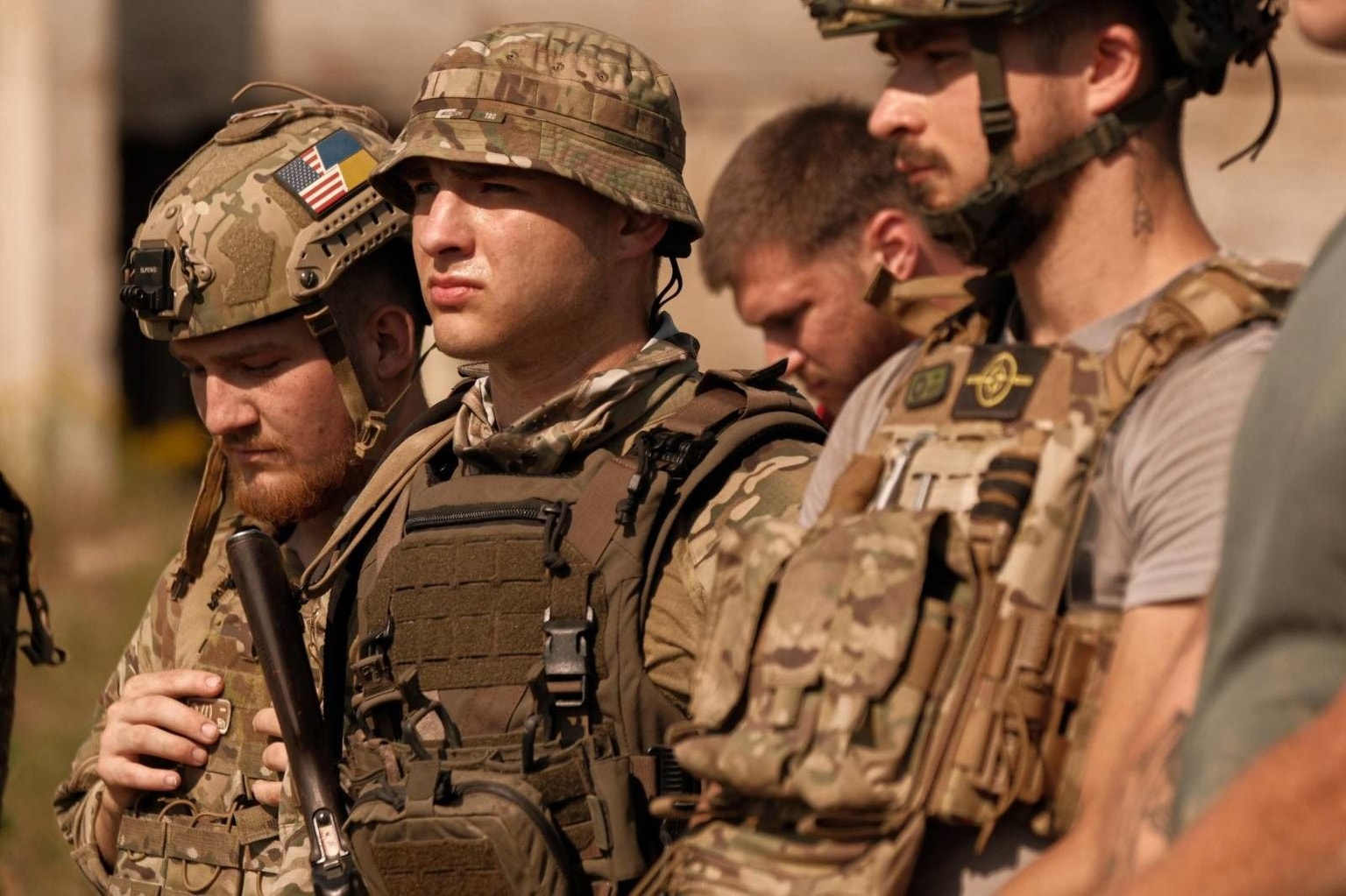
Opinion: 6 ways Ukraine’s Kursk incursion is changing the tide of war
The Ukrainian incursion into Russia’s Kursk Oblast marks a significant turning point, with far-reaching implications for the future of Russia's war against Ukraine.
Ukrainian servicemen operate an armored military vehicle on a road near the Russian border in Sumy Oblast, Ukraine, on August 14, 2024. (Photo by Roman Pilipey/AFP via Getty Images)

Andreas Umland
Analyst at the Swedish Institute of International Affairs' Stockholm Center for Eastern European Studies
As becomes clearer with each passing day, the Ukrainian foray into Russia’s Kursk Oblast, which began on Aug. 6, is no minor incident. Kyiv’s unexpected operation on Russian territory could fundamentally change the character of Russia’s war against Ukraine. Ukraine’s attack represents a novel development in a least six ways.
First, Ukraine’s Kursk incursion is a large-scale military offensive being carried out by Ukraine’s official military, unlike previous infantry raids into Russian territory, which were conducted by smaller, semi-regular units like the Free Russia Legion and the Russian Volunteer Corps, composed of Russian citizens fighting for Ukraine.
This distinction is both practically and symbolically significant. Unlike the limited incursions by pro-Ukrainian Russian fighters, this offensive is a major Ukrainian military operation involving a large number of personnel and a wide range of weaponry.
While the earlier raids were embarrassing for Moscow too, they were relatively minor, carried out by paramilitary units with limited arms. Now, the regular Ukrainian military is, in many ways, mirroring what the Russian military has done in Ukraine since 2014.
Second, the initial days of the Ukrainian incursion into Russia have been unexpectedly successful for Kyiv. Reports indicate that Ukrainian forces have occupied around 1,000 square kilometers of strategically important Russian territory while sustaining moderate losses in soldiers and equipment. The Ukrainian military also reportedly controls 74 settlements, including the administrative center of Sudzha.
Though a small town of about 5,000 citizens, Sudzha was an important logistics hub for the Russian military. In the Tsarist period, it was largely Ukrainian-speaking, and in 1918, it briefly served as the first capital of the emerging Ukrainian Soviet Socialist Republic. Sudzha also hosts a Gazprom metering station, through which all of Russia’s remaining onshore natural gas transportation to the European Union passes. This has caused nervous reactions in European markets, with gas prices rising since Aug. 6, though these fears may be overblown.
Gas has continued to flow through Sudzha throughout the entire war since 2014, from Ukraine to Slovakia and further into Central Europe. Both Moscow and Kyiv have maintained, and presumably will continue to maintain, a commercial interest in upholding the remaining Russian-EU gas trade. This suggests that military developments around Gazprom’s infrastructure – whether on Ukrainian or Russian territory – do not necessarily pose a threat to these mutually profitable gas flows, as strange as that may sound.
Third, the Kursk incursion has led to the largest and quickest change in the war’s front line since Ukraine’s liberation of Russian-controlled territory in Kharkiv and Kherson oblasts in the fall of 2022. Until recently, all territorial gains or losses by either side have been smaller and less significant. For the first time in a long period, the map of the front between Russia and Ukraine looks markedly different.
Fourth, the Kursk incursion can be seen as a belated implementation of the much-discussed Ukrainian counteroffensive that stalled in 2023. A year ago, a Ukrainian retaliatory attack on Ukrainian soil was unsuccessful; now, a more successful attempt is being made on Russian soil. With the Ukrainian troops’ relatively deep incursion into western Russia, the war has somewhat shifted from attrition to maneuver warfare.
Fifth, and perhaps more importantly, with the Kursk incursion, the land war between Russia and Ukraine has transitioned from a confrontation almost exclusively on Ukrainian territory to one now being fought on both countries’ legal state territories. This shift has already become a source of embarrassment and a distraction for the Kremlin. If the Ukrainian advance into Russia proves to be more than a short episode, Kyiv’s shift to offensive warfare on Russian soil will have significant strategic, and possibly paradigmatic, implications.
Sixth, the initial success of the incursion into Russian territory raises questions about the significance of the Russian military doctrine’s statements and frequent oral threats concerning the use of nuclear weapons since 2022. The August incursion arguably constitutes the gravest possible violation of Russia’s sovereignty.
Yet, during the first week of Kyiv’s rapid offensive, Moscow issued no warnings about nuclear escalation. Instead, the Kremlin announced a so-called “anti-terrorist operation” under the command of the Federal Security Service (FSB), thereby downgrading the Ukrainian military’s deep incursion into Kursk Oblast to an ordinary national security threat.
For Moscow, the new Ukrainian strategy, even with its currently limited achievements, complicates the planning, conduct, and presentation of Russia’s expansionist war against Ukraine. In light of recent developments, Russia will need to retain and deploy more troops within its own territory rather than Ukraine's. Reversing, preventing, and deterring the Kursk offensive and potential future Ukrainian attacks on Russian soil has become a new strategic priority for Russia's general staff.

Previously, the Russian military focused on fighting in foreign lands – whether in Moldova, Georgia, Syria, Ukraine, or other countries. This exclusively offensive, interventionist, or irredentist period of Russian military deployment is now ending. It is being replaced by the novel task of defending legitimate Russian state territory while continuing interventions in the former Soviet space and elsewhere.
For Kyiv, the incursion into Kursk Oblast is partly a diversionary move to tie up Russian troops that would otherwise be attacking, ravaging, and terrorizing Ukraine. Additionally, Ukraine may be attempting to influence Russia's domestic and foreign affairs. Kyiv appears to be trying to undermine the Kremlin's political reputation, propaganda strategy, and information policy among both the Russian population and the international community, whether in the West or beyond.
Kyiv hopes that the various Russian administrative lapses that led to Ukraine's success on Russian soil will become problematic for Russian President Vladimir Putin's standing, particularly among the Russian political elite and pro-Russian groups worldwide. Much of the support for Putin is driven not by genuine attraction to Putinism or belief in Russian narratives about NATO expansion, "Ukrainian fascism," or Western subversion, but by cynical respect for the apparent success of Putin's ruthless domestic and foreign policies. The unexpectedly deep and, so far, successful Ukrainian incursion into Russian territory creates cognitive dissonance among these audiences.
The success of Ukraine's incursion illustrates once more Russia's strategic ineptitude, administrative deficiencies, and material shortcomings. These weaknesses were already evident in 2022 during the failed Russian attack on Kyiv in the spring and the successful Ukrainian counteroffensives in Kharkiv and Kherson oblasts in the autumn. The current Ukrainian operation again undermines the narrative of Russia's alleged invincibility and superiority – a mirage often propagated to justify a Russian victor's peace with Ukrainian territorial concessions.
Ukraine's new offensive and risk-taking behavior in the war is less a reaction to Russian aggression than the result of a decade of insufficient global support for Kyiv in its largely defensive struggle. Iraq's 1990 annexation of Kuwait was quickly reversed by an international coalition within a year. In the 1990s, Serbia's irredentism was eventually subdued by NATO forces. In contrast, international support for Ukraine has been not only indirect but also slow and inadequate, despite such early provocations as Russia's annexation of Crimea in March 2014 and the downing of Malaysian Airlines Flight MH-17 in July 2014.
Western economic sanctions against Russia and military support for Ukraine have indeed become more significant since 2022. However, they remain insufficient to defend Ukraine's territory, citizens, and infrastructure from Russia's genocidal assault. Worse, many private companies in the West and countries in the so-called Global South continue to fuel Russia's war through direct or indirect trade with the aggressor.
Western decisions to support Ukraine's defense have been slow, hesitant, and half-hearted. In response, after two and a half years of intense fighting and suffering during the full-scale Russian invasion, Kyiv now seeks to fundamentally change the character and context of the war.
Regardless of the outcome of the recent incursion, Kyiv will continue to use various means to demonstrate to international audiences that the war's development and outcome remain uncertain and that the assumption of unquestionable Russian dominance is misleading.
A further objective of Ukraine's strategy is to reframe potential future negotiations with the Kremlin over territorial issues. For instance, in upcoming multilateral talks – possibly during a second international peace conference following the July summit in Switzerland – Kyiv could adopt a new approach. In addition to continuing to assert moral, normative, and legal arguments, Ukraine's leadership may now propose transactional exchanges of captured Russian lands for annexed Ukrainian territory.
To be sure, Kyiv's new approach is risky for both Ukrainian and international security. Recent developments could evolve in various directions. The incursion has, in Putin's words, "created a large-scale provocation."
However, those foreign observers who agree with Putin should first blame their own countries' limited or absent interest in Ukraine's sovereignty and integrity. The lack of sufficient international support for Ukraine's efforts to restore its borders since 2014, coupled with continued large-scale trade with Russia, has led Kyiv to shift from a defensive to an offensive stance.
Whatever the outcome of Ukraine's current operation in Kursk, Kyiv will continue to exploit weak points along the entire perimeter of its contact with Russia, as well as among its allies, agents, and proxies. Russia will need to invest in fortifying its border with Ukraine and pay more attention to other theaters of the war beyond Ukraine's east and south. The Ukrainian incursion into Russian territory challenges perceptions – both within Russia and around the world.
Editor’s Note: The opinions expressed in the op-ed section are those of the author and do not purport to reflect the views of the Kyiv Independent. The article is based on a commentary by the Stockholm Centre for Eastern European Studies.













